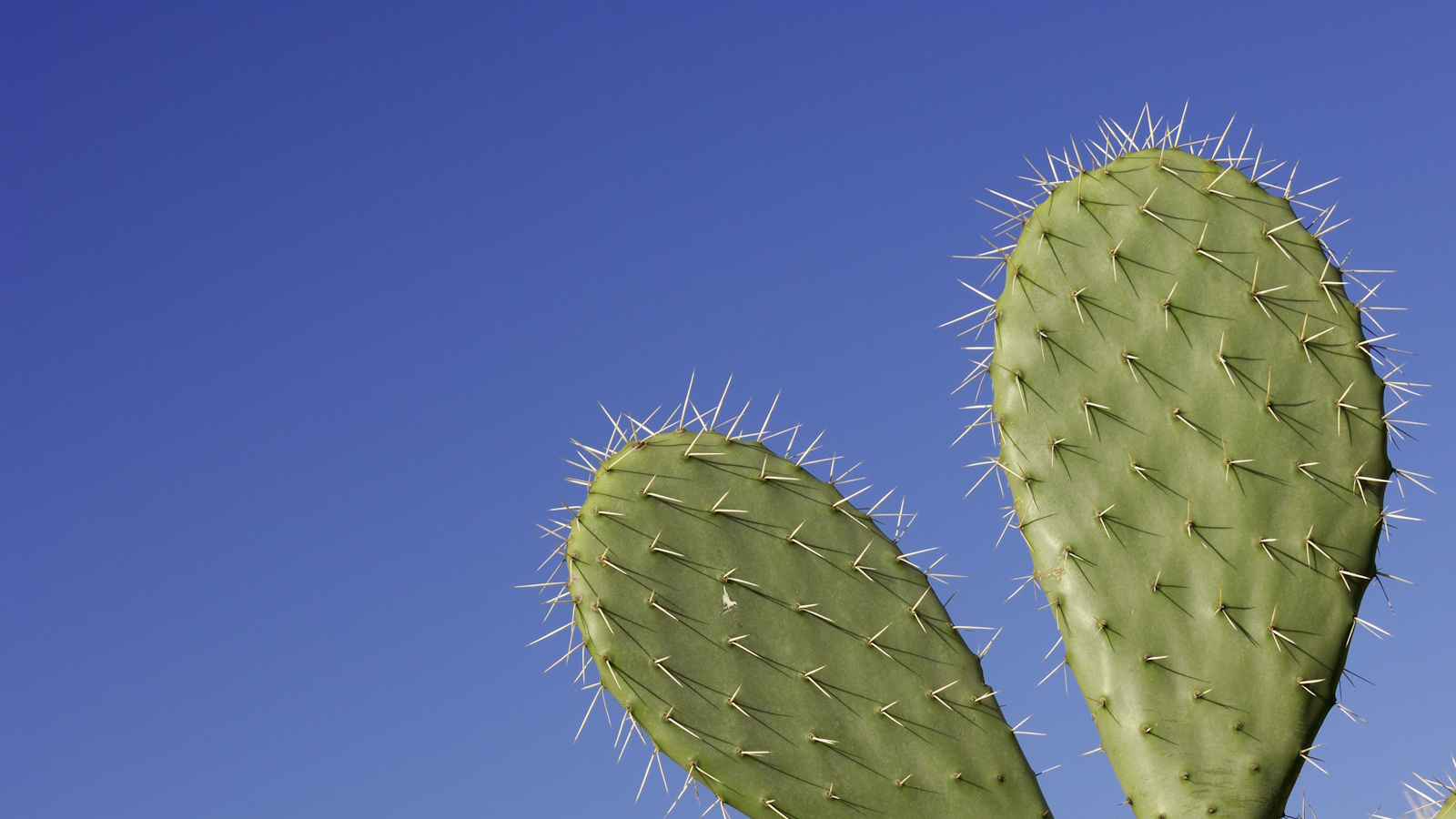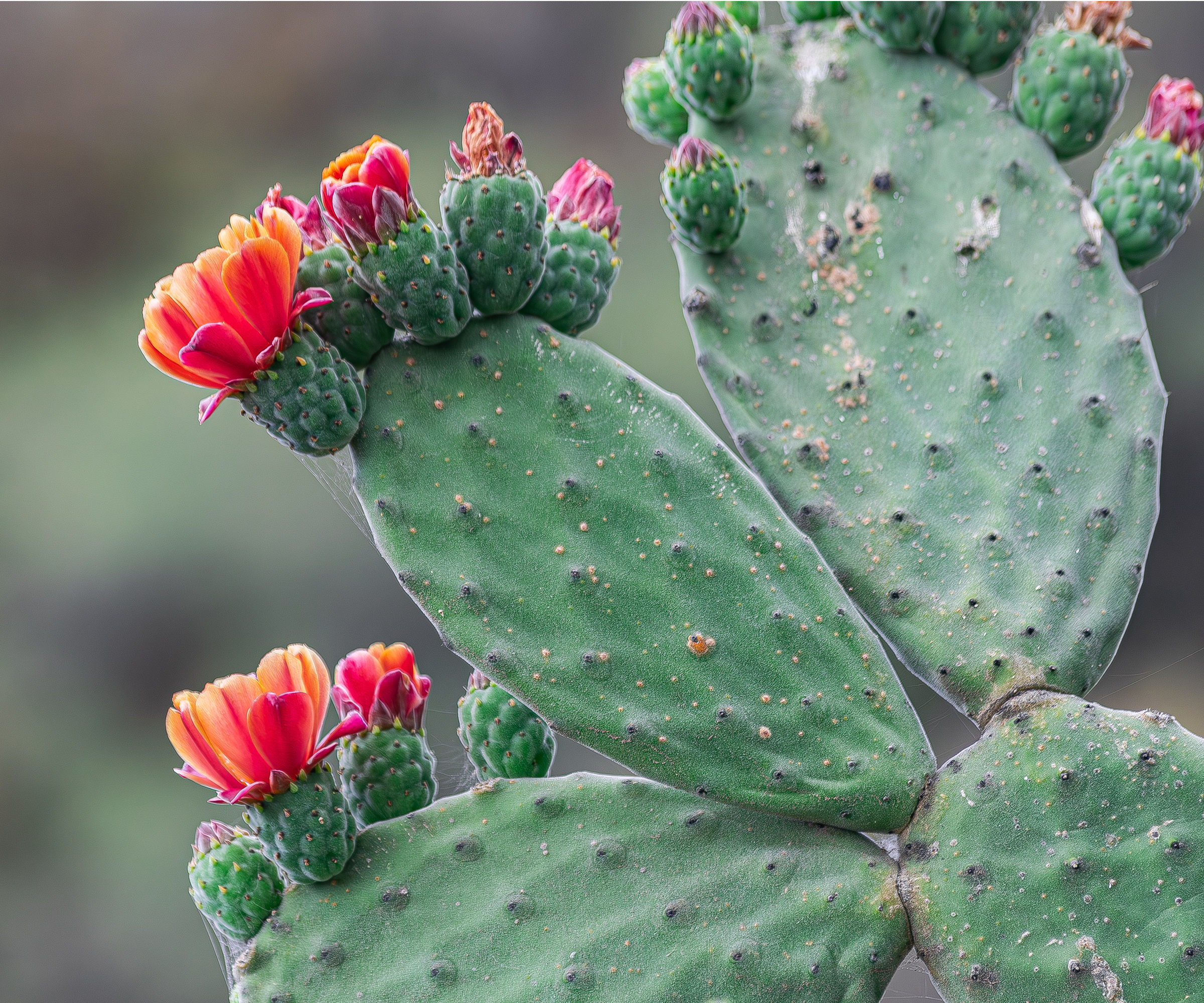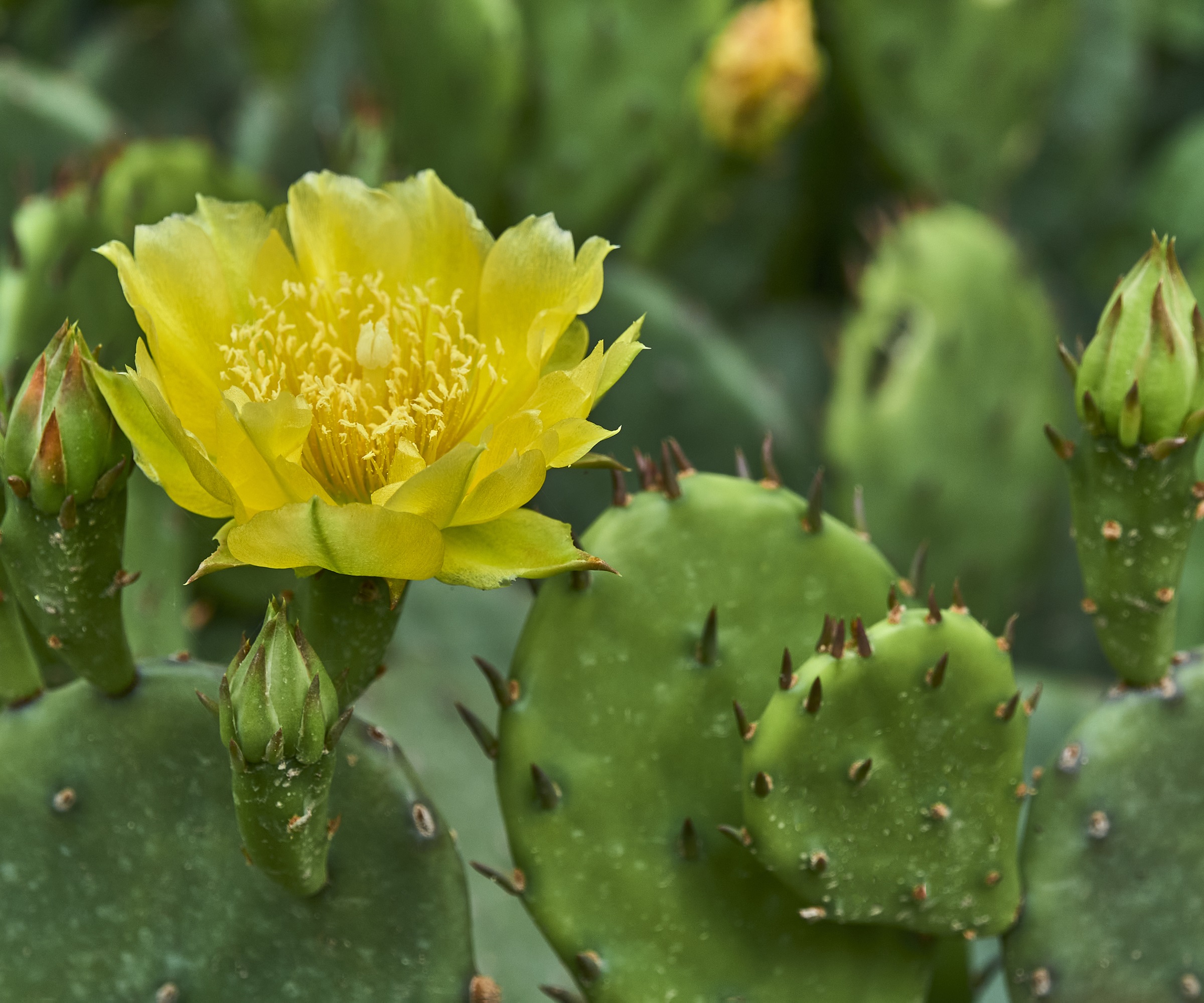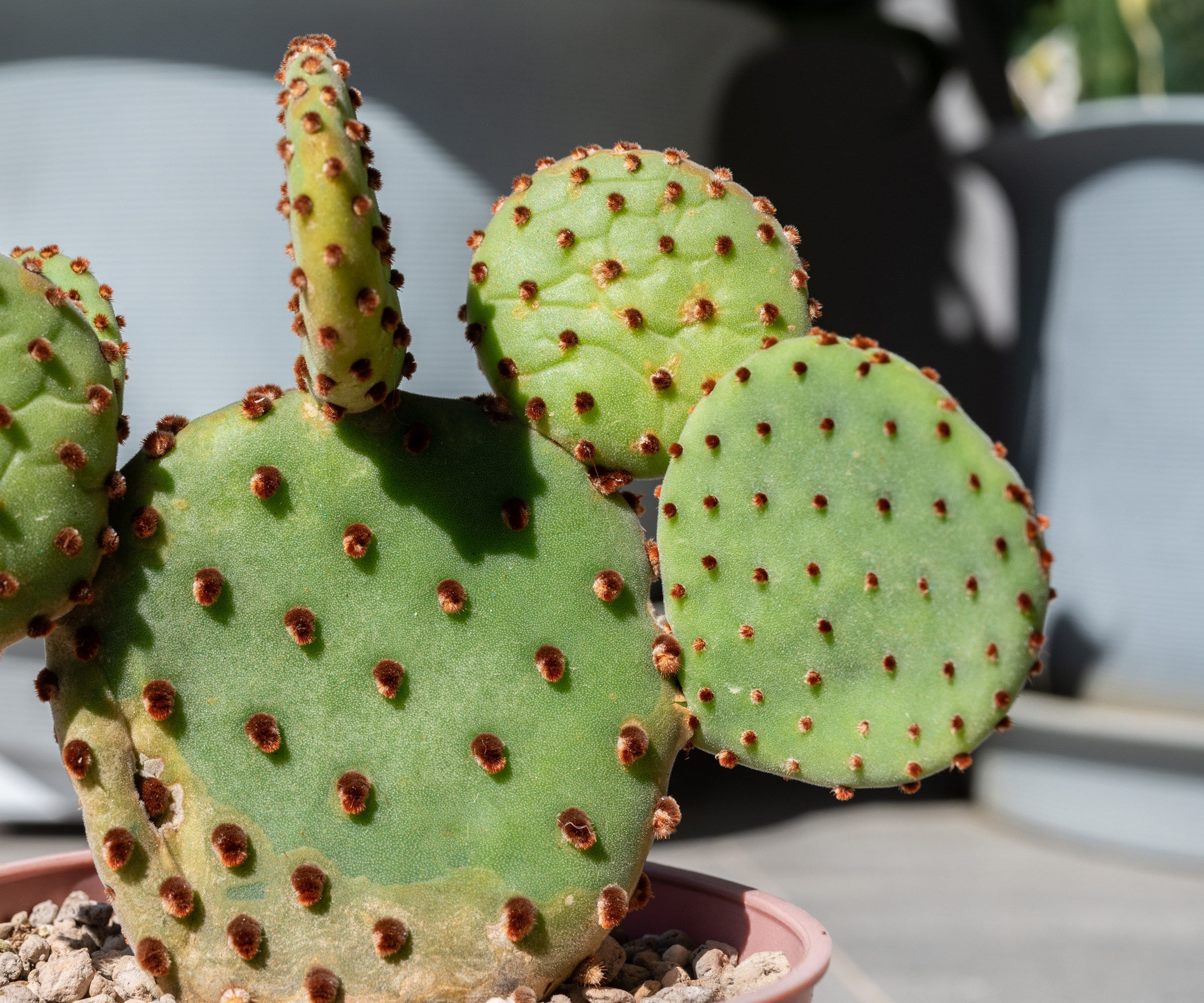
Prickly pears are iconic cacti that are easily identified by their paddle-shaped leaves. Native to the southwestern United States and Mexico, these resilient cacti have adapted to thrive in challenging desert environments, yet they can also be grown in the home.
In terms of how to grow prickly pears indoors, while they are mostly low-maintenance, there are specific requirements and rules to follow, particularly regarding soil, light and water. With a small amount of care, you can be sure that your cactus thrives.
So, if you are looking to grow one of the best indoor plants, you have come to the right place. Whether you are a houseplant beginner or a cactus aficionado, our guide has all the information you need to learn how to grow prickly pears indoors. And who knows, with the right care, you might even enjoy flowers and fruits in the years to come.

How to grow prickly pears indoors
'Prickly pears are some of our finest native cacti,' says plant expert, Katie Sunderlage. 'Outdoors, they can grow from US hardiness zone 5 to US hardiness zone 9, growing well in dry and sunny locations, although indoors, where the temperature is constant, they can be grown in any region.' Here are three simple steps to follow when learning how to care for a cactus.
Live prickly pear plants can be ordered online from Amazon.
1. Use well-draining soil

'Prickly pears are some of the best desert plants, so thrive in dry, arid conditions,' Katie says. 'This is important to remember when growing them indoors. You want to mimic a sandy or rocky soil like you might find in a desert in California or Mexico.'
One easy way to do this is to use a cactus-specific potting mix, which will contain plenty of sand, grit and drainage material to ensure that your prickly pear does not sit in water. Cactus potting soil is available from Walmart.
For a DIY alternative, you could try to create your own cactus mix by combining 3 parts of standard potting soil, 2 parts of sand or horticultural grit as well as 1 part of perlite. This will help to create a well-draining mix that suits cacti and succulents.
This potting mix has been carefully crafted with succulents and cacti in mind, helping you to grow healthy and resilient plants.
2. Water prickly pears sparingly

'Prickly pears are drought-tolerant plants so need little water to survive. In their natural habitat, they can go for weeks or even months without a drop of rain,' Katie says. They can survive such environments because of water storage adaptations, whereby water is held in their paddle-like leaves, allowing the plant to go for long periods relying only on reserves.
So, when growing prickly pears indoors, you should always allow the soil to dry out completely between waterings. In spring and summer, water once every two to four weeks, reducing to once a month or even less in fall and winter.
In addition, feeding indoor plants is also important. Remember that in such a controlled environment, plants rely on you for nutrients. Feed sparingly, using a cacti or succulent formula, stopping towards the end of summer.
Finally, when watering or feeding plants, always check that the water can freely drain at the base of your pot. Stone, grit, or even roots can clog drainage holes, so be sure to regularly monitor this to prevent waterlogging.
This organic liquid fertilizer provides essential nutrients to ensure that your cactus plants thrive.
3. Position prickly pears in a sunny spot

As with most tropical indoor plants, prickly pears require bright, direct sunlight to thrive. 'Cacti should always be positioned in a sunny spot,' Katie says. 'When growing indoors, you want to place them near a window, ideally in a location that enjoys at least six or more hours of bright light.'
If natural light is insufficient, consider using a grow light to maintain healthy growth. In low light, cacti and succulents will tend to search for sunshine, producing leggy or unusual growth as they grow towards a light source, which is a sign your plant is struggling.
FAQs
Should I move my cacti outdoors during summer?
If you are able to move prickly pears outside during summer, it can help to give your plants a boost. Cacti in particular will enjoy the increased sunlight, and fresh air can help to eradicate pests and problems which can be an issue when growing in humid zones in the home.
How often should I repot my prickly pear?
'Repot your cacti every two to three years, choosing a container that’s slightly larger than the root ball,' Katie says. 'While prickly pears grow very slowly, providing a little more space every few years and refreshing the soil will encourage new growth.'
While cacti are striking and structural plants, they are not a good plant option if you have children or inquisitive pets. Instead, try growing echeveria or crassula, or one of the many other types of succulents that do not have spikes. For more plant information, see our guide on how to care for succulents.







